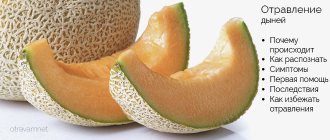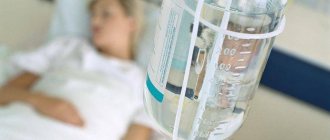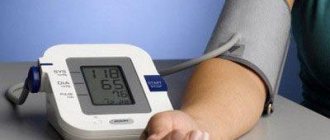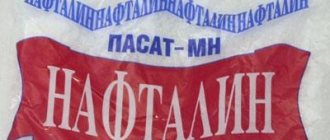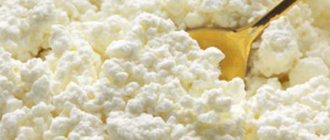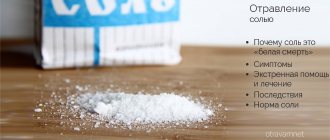The leukocyte intoxication index (LII) is an indicator that allows you to determine the degree of inflammatory damage and intoxication of the body. Using this parameter, you can assess a person’s ability to adapt to the effects of toxic substances. This allows us to determine the adaptive potential of the whole organism.
By determining this parameter, it is possible to assess the patient’s immunity, obtain information about his general condition, determine resistance indicators and the level of immunological reactivity, and also provide the necessary assistance.
Definition
In the transcript of the immunogram you can see the CD4/CD8 indicator. This is the immunoregulatory index. What does it mean? To answer this question, it is necessary to understand the functioning of the human immune system.
Lymphocytes play a major role in the functioning of the immune system. They are produced in the lymph nodes and thymus gland. This is one of the types of white blood cells - leukocytes. Lymphocytes are divided into several groups:
- B cells. They secrete antibodies that destroy foreign agents. Provide lasting immunity after an infectious disease.
- NK cells. They destroy body cells affected by infections or tumors.
- T cells. This is the most numerous group of lymphocytes. T cells are equipped with special receptors to recognize and bind foreign proteins (antigens). This type of lymphocyte also regulates the strength of the immune response.
In turn, T-lymphocytes are divided into different groups, each of which is responsible for a specific part of the immune response to the invasion of foreign agents. The following types of T cells are distinguished:
- T-killers. They break down mutated and infected cells.
- T-helpers. When foreign proteins enter the body, helpers transmit a signal to group B lymphocytes, which leads to the production of antibodies.
- T-suppressors. These cells regulate the strength of the immune response. If necessary, they inhibit or completely stop the production of antibodies by B lymphocytes. The main task of suppressors is to prevent the immune system from destroying its own healthy cells.
In the interpretation of the immunogram, there are special designations for T-lymphocytes:
- CD3 - total number of T cells;
- CD4 - T-helper cells;
- CD8 - T-suppressors.
The immunoregulatory index (IRI) is the CD4/CD8 ratio. To calculate it, it is necessary to divide the value of T-helper cells by the value of T-suppressor cells.
The IRI shows which type of T cells is most active. Normally, in a patient, all groups of lymphocytes work harmoniously. If the activity of T-suppressors predominates, then a decrease in immunity occurs. With increased functioning of T-helper cells, autoimmune reactions appear against the body’s own tissues.
If lowered
Causes
A decrease in the indicator (leukopenia) indicates poisoning of the body with heavy metals and chemicals: benzene, arsenic, toluene, the influence of radioactive radiation.
Symptoms
There are no signs of leukopenia. This condition can be detected when infections are associated - mycosis, herpes, etc. It is important to monitor the characteristics of leukopenia. Infections can have a complex course and lead to general sepsis. Even minor irritation provokes phlegmon.
Symptoms of decreased LII are the following:
- white plaque in the mouth,
- development of ulcerative stomatitis,
- pastosity of oral tissues,
- dysbiosis.
Consequences
Leukopenia takes a lot of strength from the patient’s body. Therefore, complications of this condition are the following:
- weakening of the immune system,
- fainting,
- cancer,
- AIDS,
- aleukia,
- agranulocytosis.
To treat patients with this condition, it is necessary first of all to strengthen the immune system. That's why it's so important to take vitamins. AIDS is an insidious disorder, the risk of developing which is doubled with leukopenia.
Immunogram
The immunoregulatory index is determined as part of an immunogram. Venous or capillary blood is taken for analysis. In some cases, saliva, gland secretions or liquor fluid are examined.
During the study, not only the IRI is determined, but also the indicators of the following cells are calculated:
- leukocytes;
- T-lymphocytes (total number);
- different groups of T-lymphocytes (separately).
In addition, the number of antibodies of different groups and the rate of blast transformation reaction of lymphocytes are determined.
Previously, the immunoregulatory index was considered one of the most important indicators of the analysis. Currently, the CD4/CD8 ratio is assessed only in conjunction with other immunological data. It is impossible to make a diagnosis based solely on IRI.
Indications for the study
There are the following indications for an immunogram:
- primary and secondary immunodeficiency conditions;
- parasitic pathologies;
- frequent infectious diseases;
- causeless weight loss;
- suspicion of autoimmune pathologies;
- long-term use of corticosteroids and immunosuppressants.
The value of IRI is very important for assessing the patient’s condition and treatment results for HIV infection. The index can be used to judge the effectiveness of therapy. All carriers of the human immunodeficiency virus must undergo this test regularly.
Main types of changes in the cellular composition of leukocytes
Leukocytosis, neutrophilia, eosinopenia, lymphocytopenia, monocytopenia
Oncological diseases (cancer), pneumonia, peritonitis, septic infection
Leukocytosis, neutrophil shift to the left, eosinophilia, lymphocytopenia, monocytopenia
Pulmonary tuberculosis, lymphogranulomatosis, scarlet fever
Relative lymphocytosis, leukopenia, neutropenia, “degenerative” shift to the left
(typhoid fever, measles, brucellosis, influenza, etc.)
Lymphatic and monocytic reactions
Leukocytosis, lymphocytosis, monocytosis
Leukopenia, neutropenia, (with neutrophilic shift to the left), lymphopenia
Normal indicators
Normally, the CD4/CD8 ratio should be between 1.6 and 2.2. Reference values are the same for patients of any age and gender. It is important to remember that in some cases the analysis may produce false data. The results of the study may be affected by the use of steroid hormones, cytostatics and even multivitamin complexes.
Therefore, a few days before the study, it is recommended to stop taking medications. If the patient cannot interrupt the course of drug therapy, then it is necessary to inform the doctor about all medications taken.
Increased values
If a patient has an increased immunoregulatory index, this indicates excessive activity of T-helpers and a weakening of the regulatory function of T-suppressors. At this rate, immune cells can destroy the body’s own tissues.
Increased IRI is most often observed in patients with autoimmune diseases (systemic lupus erythematosus, scleroderma, rheumatoid arthritis, etc.). The cause of excessive activity of T-helper cells can also be a tumor of the thymus gland. With this pathology, an excessive number of lymphocytes are produced.
High rates of IRI are observed in acute lymphoblastic leukemia. This serious disease is accompanied by an uncontrolled increase in the number of immature lymphocytes.
High leukocyte index
If the indicator is elevated, it means that a disease is occurring in the body. The nuclear neutrophil is responsible for protecting the human body. With a high index it is assumed:
- Infections;
- Fungal infection of the body;
- Thrush in women;
- Poisoning;
- Inflammation of connective tissues;
- High sugar in diabetics;
- The presence of a malignant tumor;
- Heavy metal intoxication;
- Stress or depression;
- Prolonged physical activity on the body.
Monocytes and lymphocytes actively multiply in the presence of infections in the body, phosphorus or tetrachloroethane poisoning. With allergies, helminth damage, dermatitis and exacerbation of infection, the number of eosinophils increases. Influenza, chickenpox and tuberculosis provoke an increase in basophils.
How to reduce the parameter
An increase in white blood cells indicates the presence of inflammation inside the human body. To reduce the indicators, it is necessary to determine the endogenous or exogenous nature of the disease and begin active treatment.
The upward shift of leukocytes in the presence of inflammation should be reduced with the help of anti-inflammatory drugs. Antiparasitic agents are used when infested with parasite larvae. Allergies are treated with antihistamines. During the period of bearing a child, the level of leukocytes is monitored by an obstetrician-gynecologist, this will help warn about the occurrence of the disease.
Traditional medicine to reduce levels is suitable during acute respiratory viral infections and internal inflammation. It is recommended to use linden tea and propolis tincture.
Consequences
If treatment for leukocytosis is not started in time, complications are possible:
- The inflammation will become purulent;
- Localization of purulent inflammation in the abdominal cavity will occur;
- The patient acquires serious skin diseases;
- A malignant tumor metastasizes to other organs;
- Inflammation in the connective tissues develops into a severe course of the disease - lupus erythematosus;
- A miscarriage or the formation of severe pathologies in the newborn is possible.
Symptoms
An increase in leukocytes in children is asymptomatic, but in adults it coincides with signs of the disease. Leukemia is a dangerous disease that can be treated at an early stage. Therefore, identifying it in the early stages guarantees recovery.
Signs of a high white cell count:
- General weakness and drowsiness;
- Fever;
- Presence of fatigue and discomfort;
- Sweating during sleep;
- Dizziness and loss of consciousness;
- Pain in the arms and legs;
- Labored breathing;
- Decreased appetite and weight loss.
Causes
An increase in indicators is associated with physiological characteristics and the presence of diseases.
Pathologies of the body that provoke an increase:
- Diseases of the genitourinary system;
- Kidney diseases;
- Malignant tumors;
- Diabetes.
Physiologically related increases:
- Poor nutrition;
- Physical exercise;
- Menstrual cycle in women;
- Using medications that have expired or are not intended to treat this disease;
- Birth injuries.
Decrease in indicator
If the immunoregulatory index is reduced, this indicates a serious deterioration in the functioning of the immune system. Low levels of IRI indicate that the function of protective cells in the body is weakened, and regulation by T-suppressors is excessive. This is usually observed in the following pathologies accompanied by immunodeficiency:
- infectious diseases (including HIV infection);
- congenital immunodeficiency;
- any protracted and chronic diseases;
- bone marrow tumors.
A low rate of IRI in HIV-infected patients indicates insufficiently effective therapy and a possible deterioration of the patient’s condition.
Formula for calculating results
The value of PII is difficult to understate. Determining this parameter helps to assess the level of intoxication in infectious and inflammatory pathologies. The indicator helps to control the course of the pathology, adjust treatment prescriptions, and make a prognosis regarding complications.
Today, several formulas for calculating this index are used - Fishchenko, Kalf-Kalifa. This indicator is also calculated according to Ostrovsky.
The formula for calculating this index was invented by Kalf-Kalif Ya.Ya. back in 1941. But today it is practically not used. This is due to difficulties in calculations and memorization.
In 1983, a new calculation method was introduced by V.K. Ostrovsky. To determine the norm of leukocytes, use the following expression: LII = (PK+Mi+Yu+P+S)/(L+Mo+E+B).
Where:
- PC – band neutrophils,
- Mi - myelocytes,
- Yu - young,
- P – plasma cells,
- C – segmented neutrophils,
- L – lymphocytes,
- Mo - monocytes,
- E – eosinophils,
- B – basophils.
PII calculation calculator.
PC - band neutrophils: Mi - myelocytes: Yu - young: P - plasma cells: S - segmented neutrophils: L - lymphocytes: Mo - monocytes: E - eosinophils: B - basophils:
With viral pathologies, LII decreases, and with bacterial pathologies, it increases. An indicator of more than 10 indicates the development of septic shock in the patient. High LII values may indicate necrobiotic tissue damage.
The result of the study can tell about various pathologies. Therefore, it is so important to determine whether this parameter has been reduced or increased.
What to do if there are deviations from the norm
If a patient has an elevated IRI, this may be a sign of serious illness. However, it is impossible to make a diagnosis based on immunogram data alone. In this case, it is necessary to undergo additional examination. In case of autoimmune pathologies, the patient is advised to take long-term corticosteroids and immunosuppressants, as well as clinical observation. If a patient is diagnosed with acute lymphoblastic leukemia, a course of chemotherapy is necessary. If the increase in IRI is caused by a tumor of the thymus gland, then the tumor is removed surgically.
What to do if IRI is reduced? This indicator is a sign of a weakening of the body's defenses. Are there drugs to increase the immunoregulatory index? If a decrease in IRI is provoked by an infectious pathology or chronic diseases, then the immune system returns to normal on its own after recovery or achievement of remission. In some cases, patients are prescribed immunomodulators:
- "Viferon";
- "Polyoxidonium";
- "Arbidol";
- "Immunal";
- "Cycloferon".
However, such drugs can only be taken as directed and under the supervision of a physician. Over time, the body gets used to immunomodulators, and the effectiveness of such drugs decreases. Abuse of immunostimulating drugs can lead to depletion of one's own immune system.
If the CD4/CD8 ratio is low in an HIV-infected patient, a viral load test should be performed. If necessary, the doctor will adjust the treatment regimen and increase the dosage of antiretroviral drugs.




